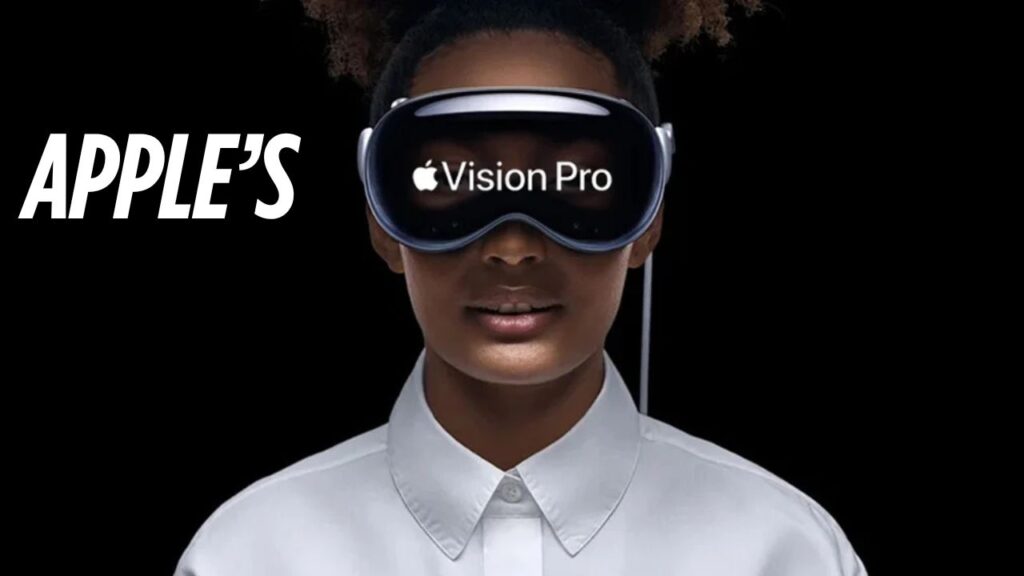Introduction
Apple has once again pushed the boundaries of innovation with the Vision Pro, its first spatial computing headset. Combining augmented reality (AR) and virtual reality (VR), this device promises to redefine how we interact with digital content. But what exactly is spatial computing, and why is Apple betting big on it?
In this blog, we’ll explore:
- What the Vision Pro is and how it works
- The concept of spatial computing and its real-world applications
- Key features that set the Vision Pro apart
- Potential use cases across industries
- What this means for the future of AR/VR
Let’s dive in!
What Is Apple’s Vision Pro?
The Apple Vision Pro is a high-end mixed-reality headset designed to seamlessly blend digital content with the physical world. Unlike traditional VR headsets that fully immerse users in a virtual environment, the Vision Pro uses advanced sensors and displays to overlay digital elements onto the real world—a concept known as augmented reality (AR).
Key Specifications
- Micro-OLED Displays: Ultra-high-resolution screens for crisp visuals
- M2 & R1 Chips: Powerful processing for real-time spatial tracking
- Eye & Hand Tracking: Intuitive controls using gaze and gestures
- 3D Camera: Capture spatial photos and videos
- App Ecosystem: Runs iOS apps optimized for spatial computing
According to Apple’s official announcement, the Vision Pro is designed for productivity, entertainment, and communication, making it a versatile tool for both consumers and professionals.
Understanding Spatial Computing
Spatial computing is the next evolution of human-computer interaction, where digital interfaces exist in three-dimensional space. Unlike traditional computing, which relies on 2D screens, spatial computing allows users to interact with digital objects as if they were part of the physical world.
How Does It Work?
The Vision Pro uses a combination of:
- LiDAR Scanners – Measure depth and map surroundings
- Cameras & Sensors – Track hand movements and eye gaze
- Machine Learning – Understands spatial relationships in real-time
This enables features like:
- Virtual Workspaces – Extend your Mac display into 3D space
- Immersive Entertainment – Watch movies on a virtual 100-foot screen
- Spatial FaceTime – Lifelike video calls with depth and presence
Companies like Meta (Oculus) and Microsoft (HoloLens) have explored similar concepts, but Apple’s focus on seamless integration with its ecosystem sets the Vision Pro apart.
Top Features of the Apple Vision Pro
1. Eye & Hand Tracking
Instead of controllers, the Vision Pro uses advanced sensors to detect eye movements and hand gestures. This makes navigation feel natural—simply look at an icon and pinch your fingers to select.
2. Passthrough Mode
The headset’s high-resolution cameras provide a real-time video feed of your surroundings, allowing you to stay aware of your environment while interacting with digital content.
3. Spatial Audio
Dynamic sound adjusts based on head movements, creating an immersive audio experience that mimics real-life acoustics.
4. App Integration
Popular apps like Safari, Messages, and FaceTime have been redesigned for spatial computing. Developers can also create custom apps using Apple’s ARKit.
5. Digital Crown for Immersion Control
A physical dial lets users adjust how much virtual content blends with reality—perfect for switching between work and entertainment modes.
Real-World Applications of Vision Pro & Spatial Computing
1. Productivity & Remote Work
Imagine working on a virtual Mac monitor while sitting on your couch or collaborating with colleagues in a 3D meeting room. Tools like Microsoft Mesh are already exploring this space.
2. Gaming & Entertainment
The Vision Pro supports immersive gaming experiences, from interactive AR games to VR movie theaters. Developers can leverage Unity’s AR Foundation to build next-gen games.
3. Healthcare & Training
Medical professionals could use spatial computing for 3D visualizations of anatomy or remote surgical training. Startups like Osso VR are already using VR for medical simulations.
4. Education & Virtual Learning
Students could explore historical sites in AR or conduct virtual science experiments, making learning more interactive.
Challenges & Limitations
Despite its potential, the Vision Pro faces hurdles:
- High Price ($3,499) – Makes it inaccessible for average consumers
- Battery Life – Limited to ~2 hours without an external power source
- Social Acceptance – Wearing a headset in public remains awkward
However, as with the iPhone and Apple Watch, adoption may grow as technology improves and prices drop.
The Future of Spatial Computing
Apple’s Vision Pro is just the beginning. As spatial computing evolves, we can expect:
- Lighter, More Affordable Headsets
- Broader App Ecosystem
- Enterprise Adoption (e.g., virtual offices, training simulations)
With competitors like Meta’s Quest Pro and Google’s AR initiatives, the race to dominate spatial computing is heating up.
FAQs About Apple’s Vision Pro & Spatial Computing
1. What is the release date for Apple Vision Pro?
Apple plans to launch the Vision Pro in early 2024, with pre-orders expected soon.
2. How much does the Vision Pro cost?
The starting price is $3,499, making it a premium device.
3. Can I use the Vision Pro without an iPhone or Mac?
While it works as a standalone device, integration with Apple’s ecosystem enhances functionality.
4. Is the Vision Pro better than Meta Quest Pro?
The Vision Pro offers superior displays and processing power, but Meta’s headset is more affordable.
5. What is spatial computing used for?
Applications include virtual workspaces, AR gaming, medical training, and immersive entertainment.
Final Thoughts
Apple’s Vision Pro represents a bold step into the future of spatial computing, blending digital and physical worlds like never before. While its high price and early limitations may slow adoption, the potential for productivity, entertainment, and professional use cases is immense.
As competitors innovate and prices drop, spatial computing could become as ubiquitous as smartphones. Are you ready for the next tech revolution?
For more updates on Apple’s latest innovations, check out 9to5Mac and The Verge’s tech coverage.






